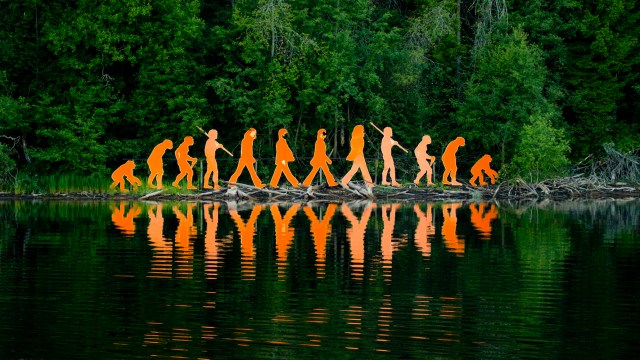Throwback Thursday: The Story of Mars
And how we’re about to take the amazing scientific leap from “we think” to “we know” when it comes to its history.
“Mars once was wet and fertile. It’s now bone dry. Something bad happened on Mars. I want to know what happened on Mars so that we may prevent it from happening here on Earth.” –Neil deGrasse Tyson
Oh, it’s true alright, something bad did once happen on Mars. Looking out at the barren, frozen desert-like wasteland that it is today, it might give you chills to think that Earth could have wound up in much the same state if things were only a little bit different.
As it turns out, there isn’t any real danger of that happening to Earth anytime soon (or anything that needs preventing), it’s time to tell all of you the story — as best we know it — about our red neighbor, and why it is the way it is today.
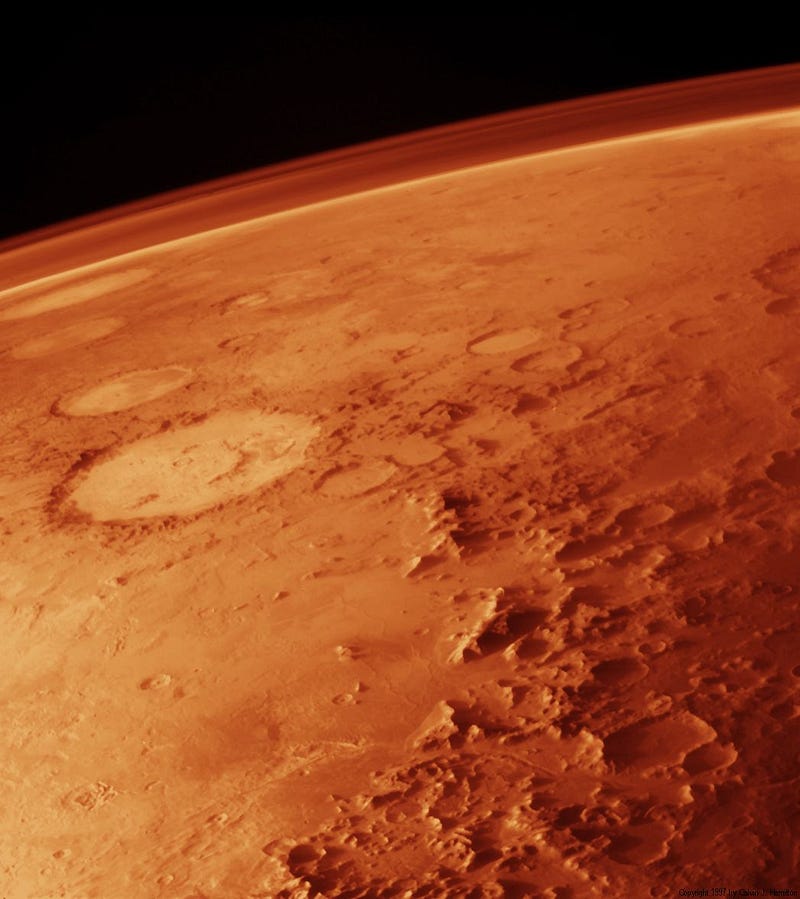
You see, when we think about Mars, we think about the smallish, red, desolate world that fascinates us today. We mostly think about the tremendous impact craters, the large mountains and the dry, rocky terrain. But Mars wasn’t always this way, and we know that to be true. There are clues to that, even today. Aerial views from orbiting spacecraft show us phenomena like dried up riverbeds with oxbow bends in them,
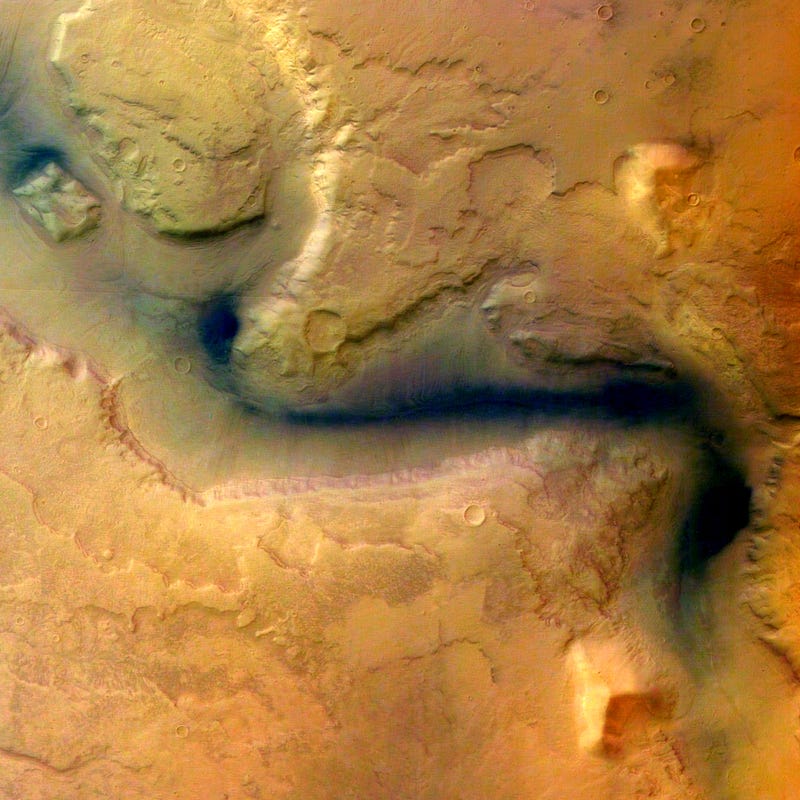
polar ice caps and (occasionally) atmospheric clouds,
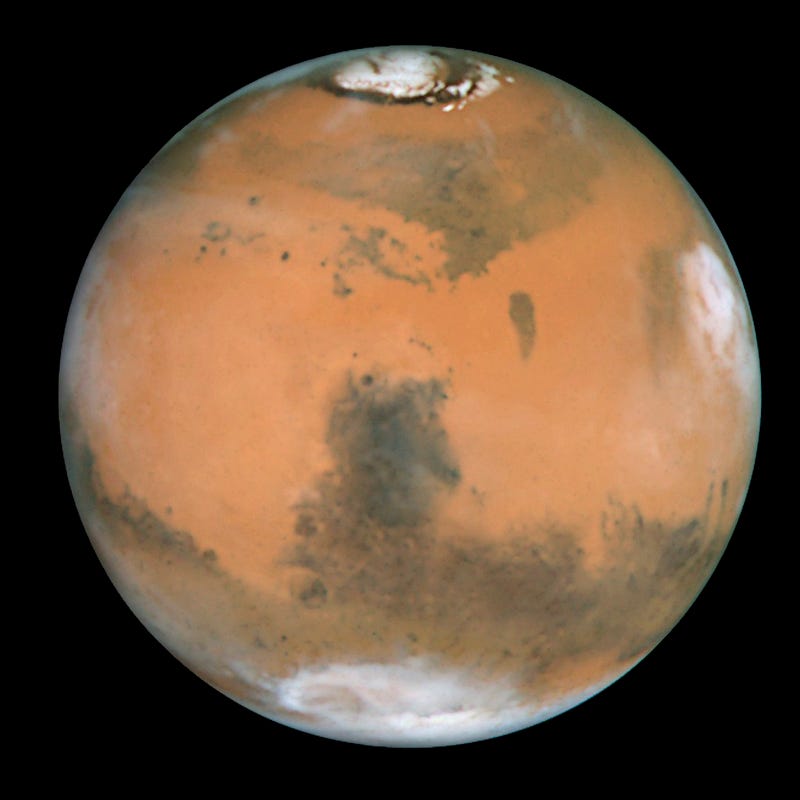
and recently, landers and rovers have found sedimentary structures in the terrain, silica-rich layers beneath the surface, and even hematite spheres, all evidence that water once flowed freely across the Martian surface.
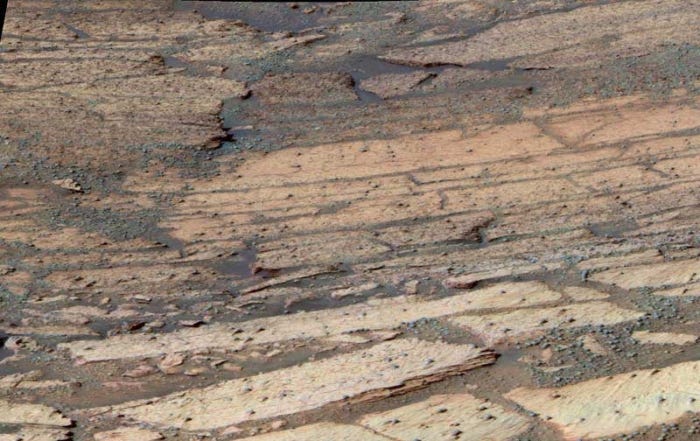
But no longer is there water on the Martian surface, and there hasn’t been for more than a billion years, to the best of our knowledge. In fact, liquid water is pretty much an impossibility on Mars today! You probably remember that like all substances, water exists in the solid, liquid or gaseous phases dependent on the pressure and temperature of its environment. While all three phases are common on Earth, only two of those phases — the solid and gaseous ones — are possible if the pressure is below a certain threshold, occurring at the triple point of water.
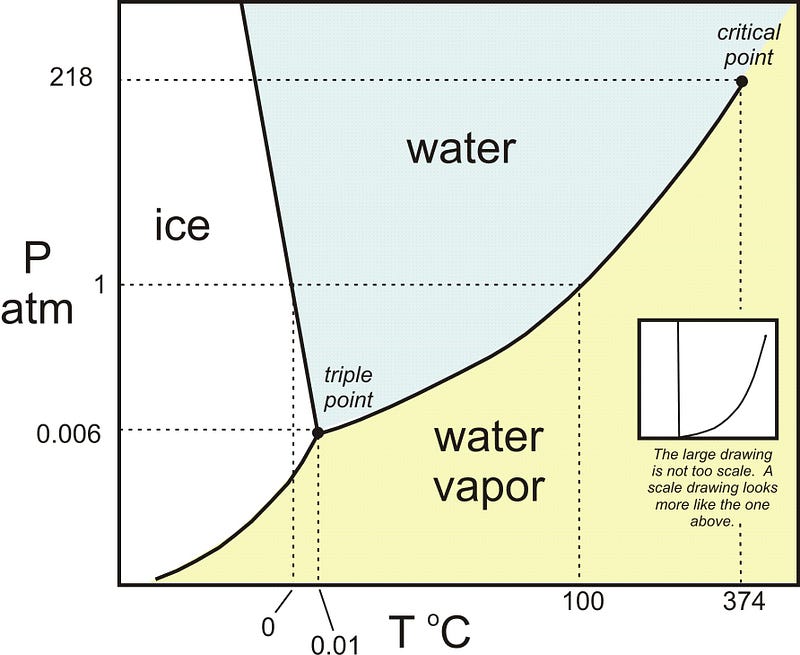
Unfortunately, the average atmospheric pressure on Mars is just 0.6% of what it is on Earth, placing it at-or-below the triple point of water, which makes the liquid phase a practical impossibility. Unless you’re at the bottom of the deepest Martian trenches, there’s simply no way to have water in any phase other than solid or gas.
But the overwhelming evidence for a watery past tells us that the red planet wasn’t always this way. In fact, if we go back to the early Solar System, Mars and Earth likely weren’t all that different.
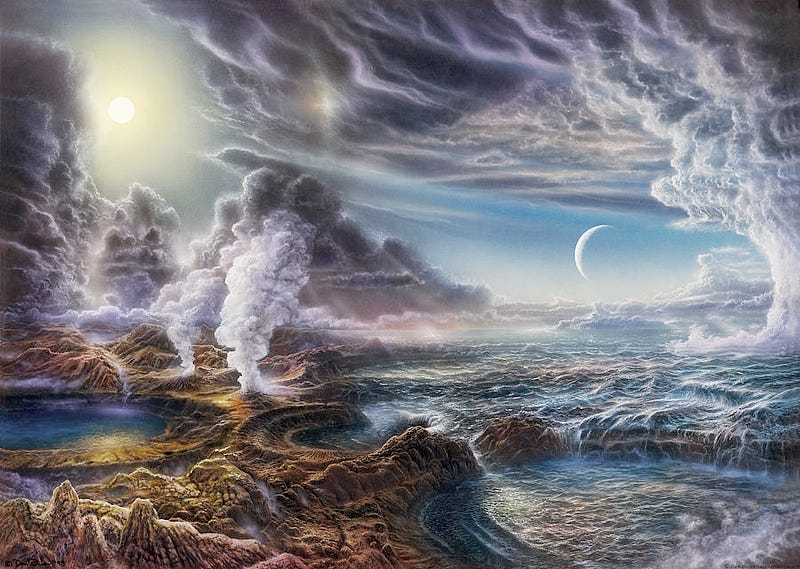
We know that our home world — in its infancy — was different from Earth today in a number of important ways. The atmosphere was rich with hydrogen, as the most common gases were water, ammonia, methane and hydrogen gas, all excellent at trapping heat. Even though the Sun was only about 80% as luminous as it is today, Earth still had vast oceans and liquid water throughout its surface. In addition, bombardment by asteroids and comets was many orders of magnitude more common than it is today, and all the organics necessary for complex life — the building blocks of everything in our biosphere today — were in place.
And to the best of our knowledge, aside from being a bit smaller and farther from the Sun, those were the conditions on Mars, too.
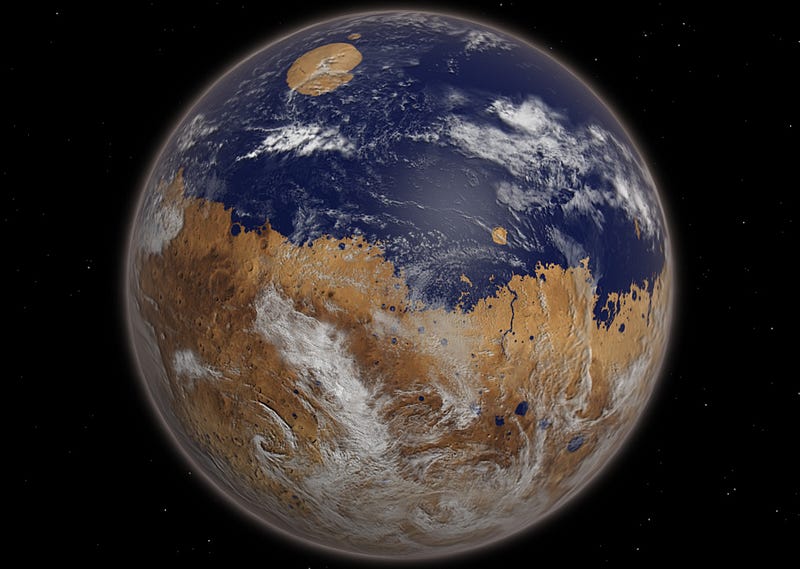
We know that life took hold on Earth relatively quickly, within the first few hundred million years. We also know that life was able to sustain itself on Earth; Mars, to the best of our knowledge, was probably not so lucky. At some point — perhaps after the first one or two billion years — those similar conditions on Earth and Mars, those conditions that were so conducive to life, became very different. We’re not certain what happened, but we have a leading (and compelling) hypothesis.
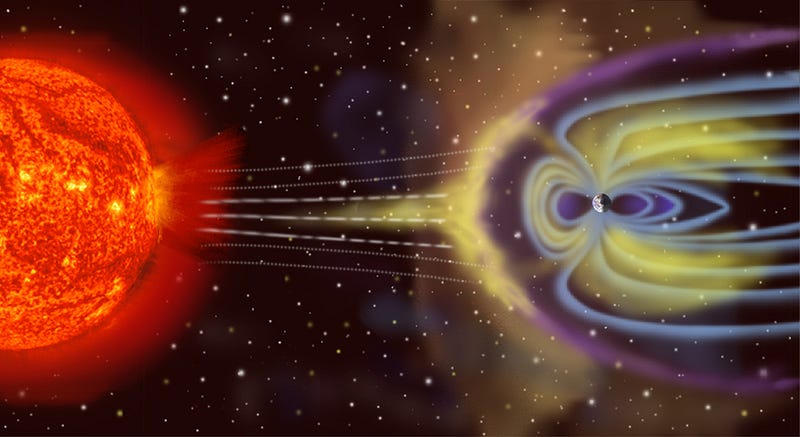
We don’t think about it on a day-to-day basis, but the Sun is constantly spewing out a stream of ionized, high-energy particles in all directions. If all we had, instead of Earth, was a big rock covered in gas, that stream of particles — the solar wind — would strip that gas away in short order. But that doesn’t happen! The main reason that the Earth still has the thick atmosphere it does is because we’ve got a powerful magnetic field generated in our planet’s core. Our hot, molten outer core gives way to an active, solid inner core at many thousands of degrees Celsius; their interplay generates a magnetic dynamo responsible for our planet’s magnetic field.
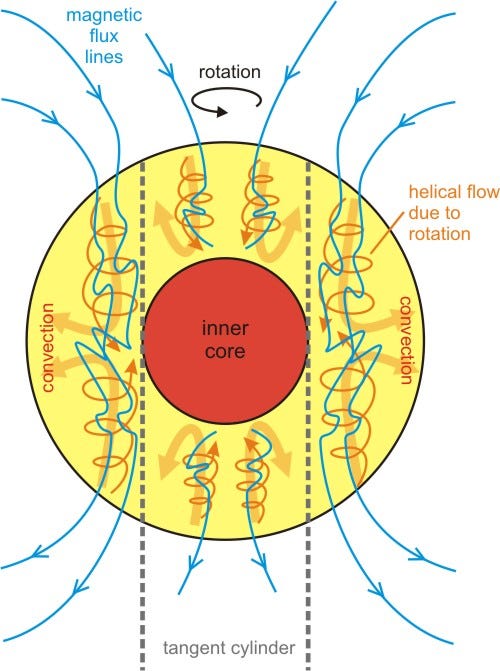
We typically think of the magnetic field as it is on the Earth’s surface, deflecting compass needles and aiding in navigation, but the reality is that it extends far into space! As high-energy, ionized particles stream towards us, the magnetic field deflects them, and protects us mightily from the solar wind, keeping our atmosphere intact.
But the Solar System is 4.5 billion years old now, and Mars is much, much smaller than Earth.
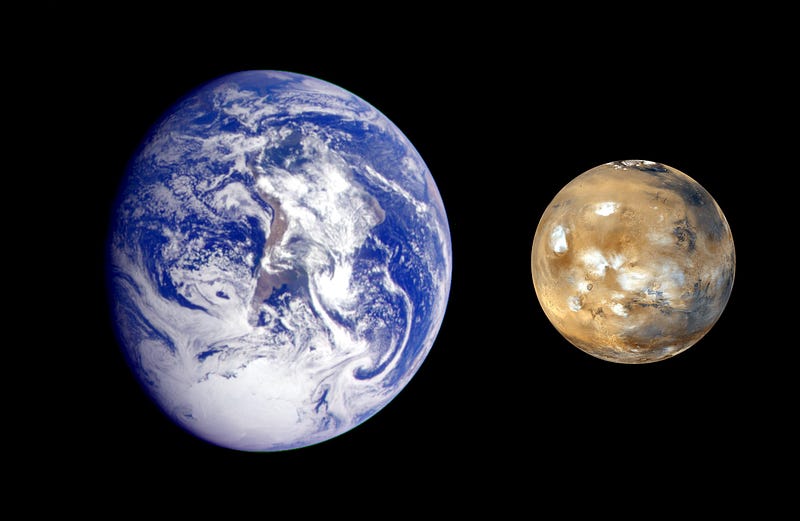
This is important, because it’s our size that allowed us to retain so much of our interior heat, but Mars was not so fortunate. Planets radiate heat away according to their surface area, and with a radius of just 3,390 km (or just 53% of Earth’s), Mars has just 28% of Earth’s surface area. But in addition to that, it’s much lower in mass; Earth is approximately ten times as massive as Mars! Due to its much smaller mass-to-surface-area ratio, Mars has cooled much, much more quickly than Earth, including all the way down to its core. At some point, the dynamic magnetic field that Mars once had (and it had one; we’ve seen fragments of the relic magnetic field imprinted in Martian rock) ceased to be. When that happened, the atmosphere of Mars was no longer protected from the solar wind.
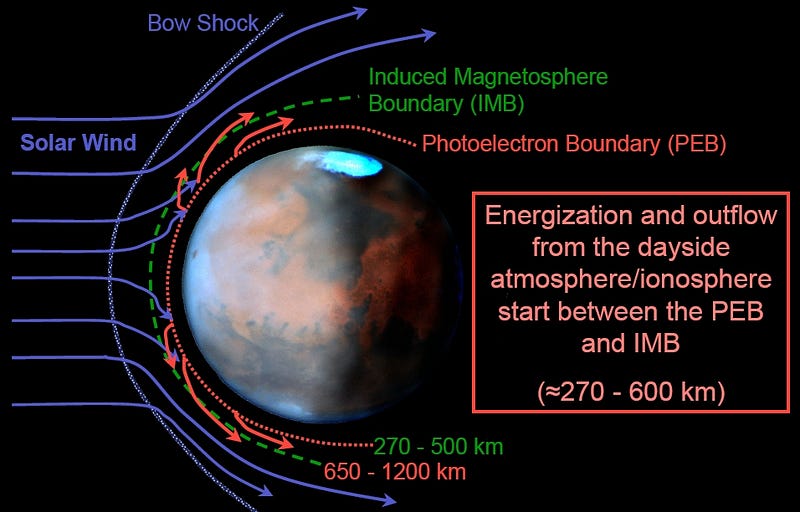
On a world where a thick atmosphere and liquid water ruled for maybe a billion years or more, the death of Mars’ magnetic field meant that these high-energy, ionized particles would begin colliding with the particles in Mars’ upper atmosphere, giving many of them enough kinetic energy to escape from the gravitational pull of the red planet! In the span of just a few million years, Mars went from a world teeming with organics, liquid water and all the building blocks of life to the desolate, barren and mostly frozen world we see today.
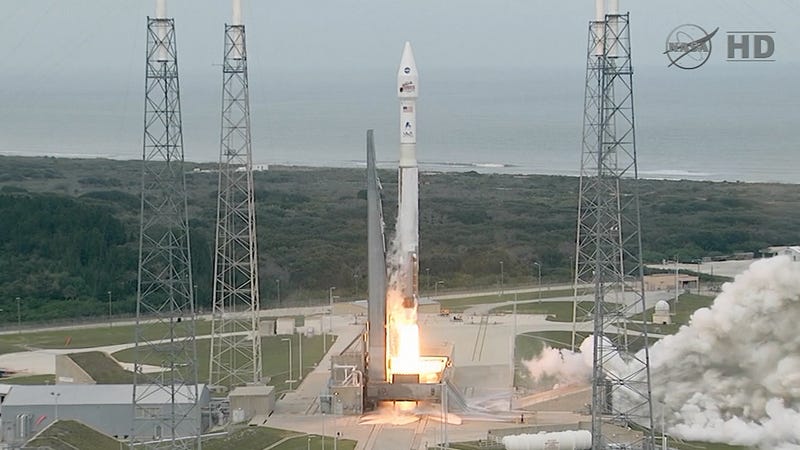
At least, that’s the leading hypothesis. The big news from earlier this week is that the mission that’s about to test that hypothesis, Mars MAVEN, has just started its scientific mission!
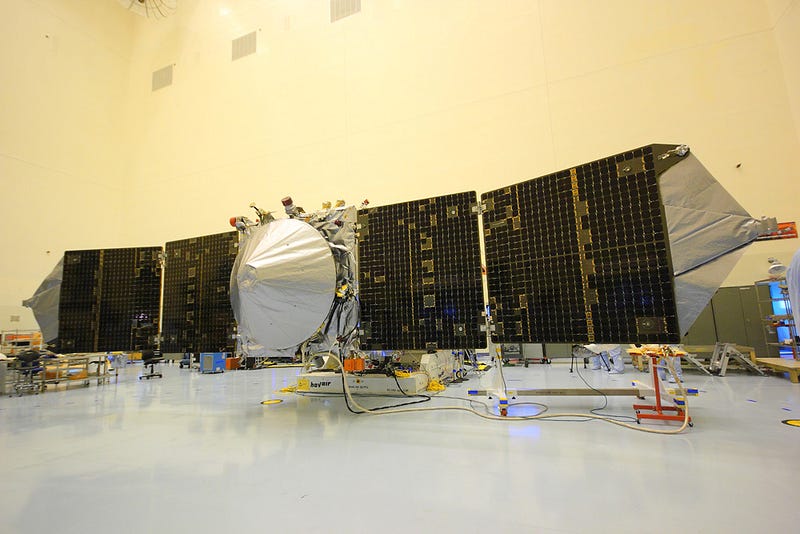
We’ve already got rovers on the ground, digging into the soil, returning photographs, performing analysis and exploring the terrain in unprecedented detail. But if we want to know the story of what happened to Mars’ surface, that means learning what happened to Mars’ atmosphere, and MAVEN is right now becoming the first spacecraft to attempt to figure that out by measuring what’s happening to Mars’ atmosphere right now.
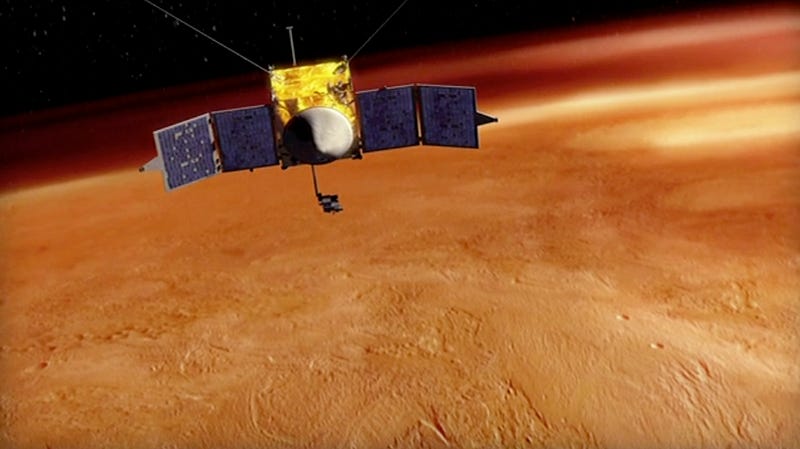
After a ten month journey, MAVEN reached Mars in September of this year, and then entered an eccentric orbit around the red planet, spending most of its time a significant distance — thousands of miles (or kilometers) — above the top of the Martian atmosphere. But once-per-orbit, it now dips down into the upper atmosphere and takes data. By measuring the solar wind and the flux of atmospheric particles escaping from Mars today, it’s going to give us the first hard data that will allow us to extrapolate how Mars lost its atmosphere in the first place!
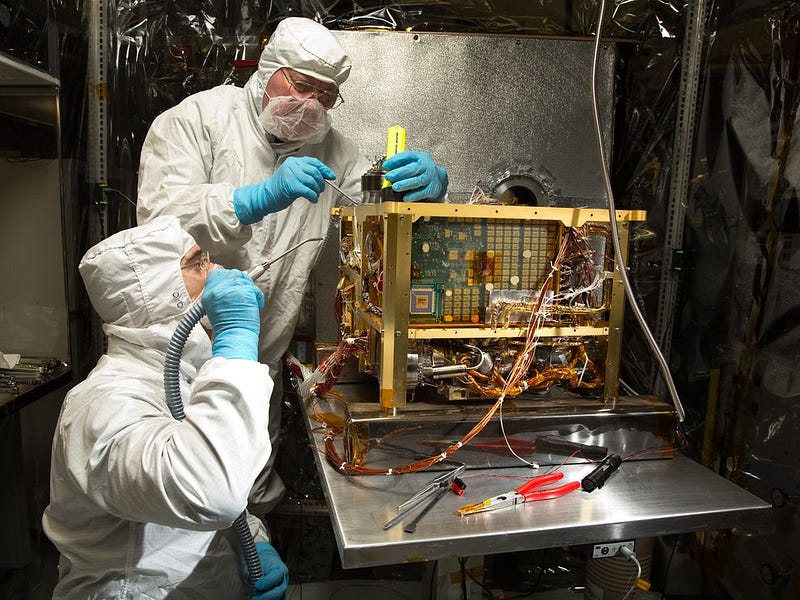
One of the great things is that Mars Curiosity has similar instruments on board to the ones on MAVEN, so while MAVEN determines the atmospheric composition, elemental isotope ratios and presence-and-formation of volatiles (such as methane) in the upper atmosphere, Curiosity can do the same thing all the way down at the bottom of Mars’ atmosphere. In fact, Maven’s just returned its very first results, providing an element-based look at the upper atmosphere of Mars, and how it’s being stripped away by the solar wind even today!
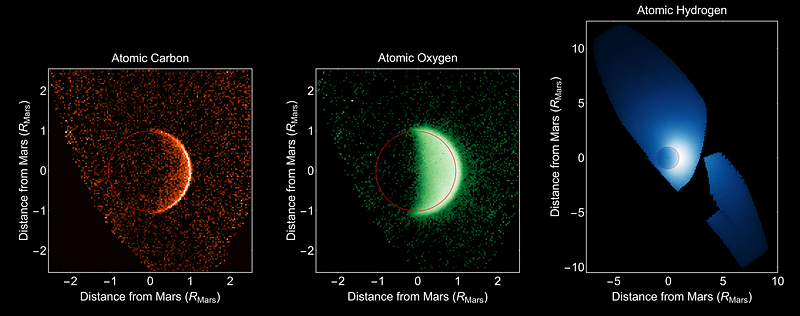
With data combined from both missions, this incredible hypothesis of how the Martian atmosphere was reduced to such a paltry state will be scrutinized and possibly either validated or falsified by the forthcoming data! As the mission unfolds, you can follow its real-time status updates here.

So when you see this cold, dry, red planet hovering in the night skies, know that it not only wasn’t always that way, but that between the orbiters and the rovers we’ve got exploring it we just might be on the cusp of finding out how it came to be this way!
And that’s a little bit of insight into the fascinating, cautionary tale of Mars!
Leave your comments at the Starts With A Bang forum at Scienceblogs!





